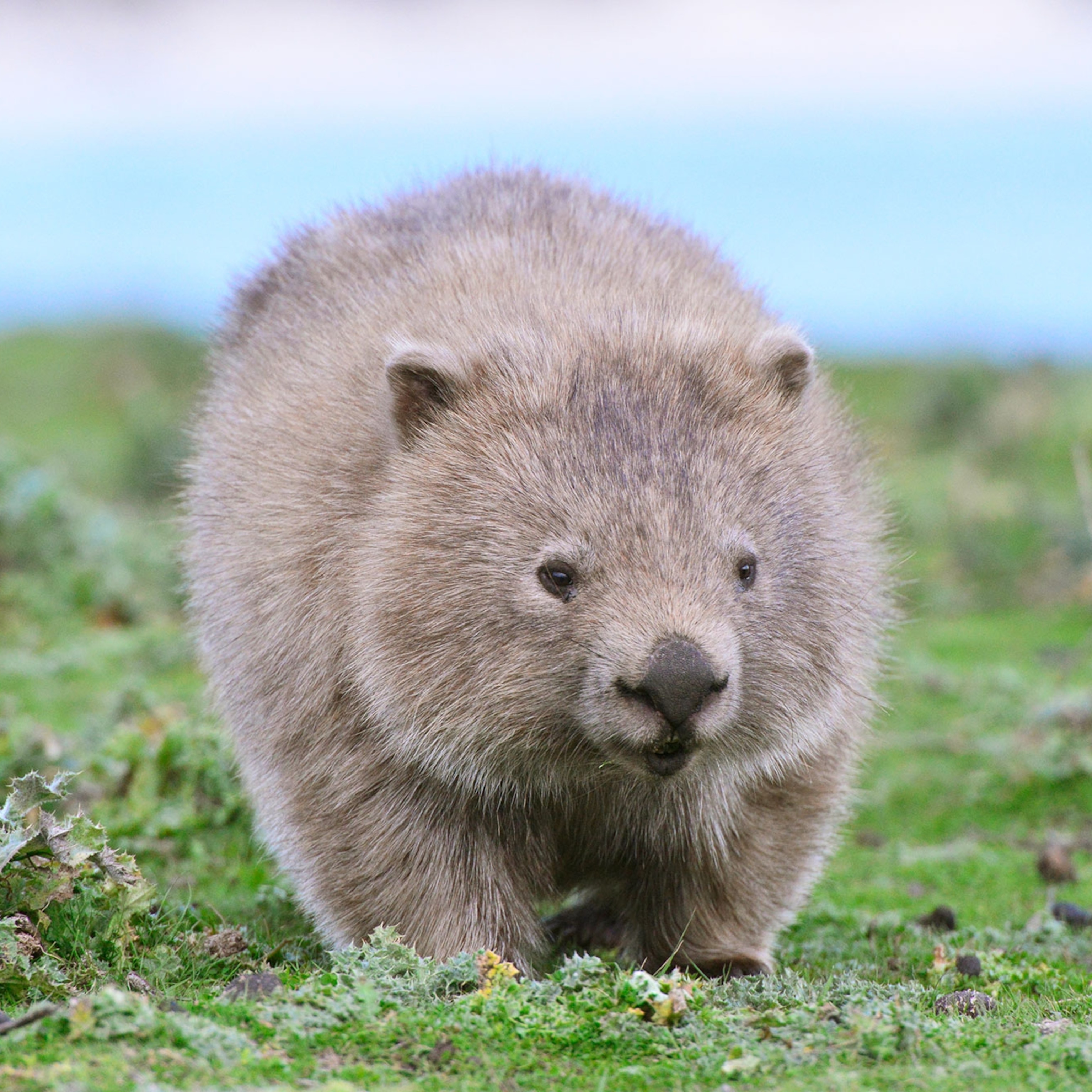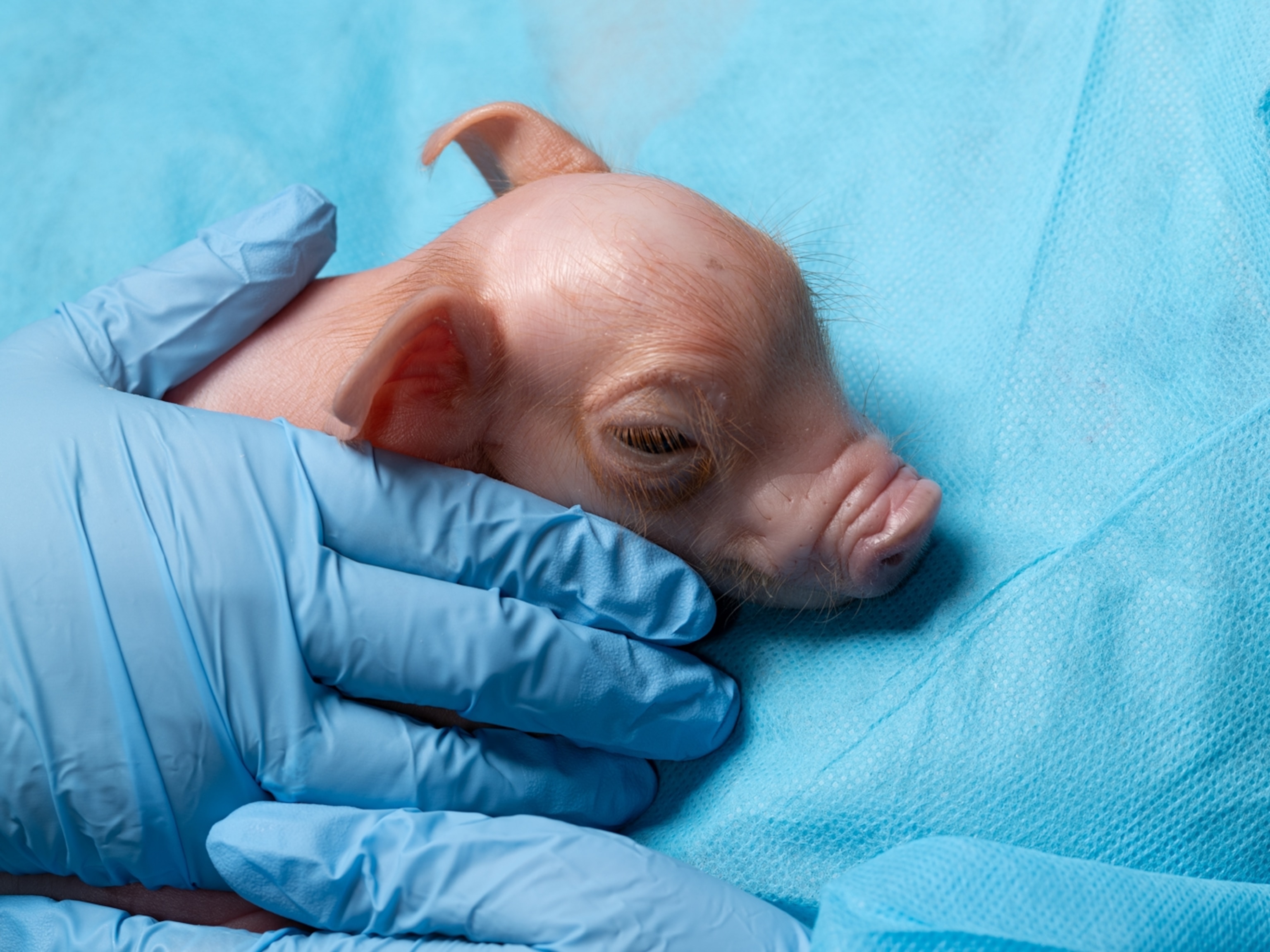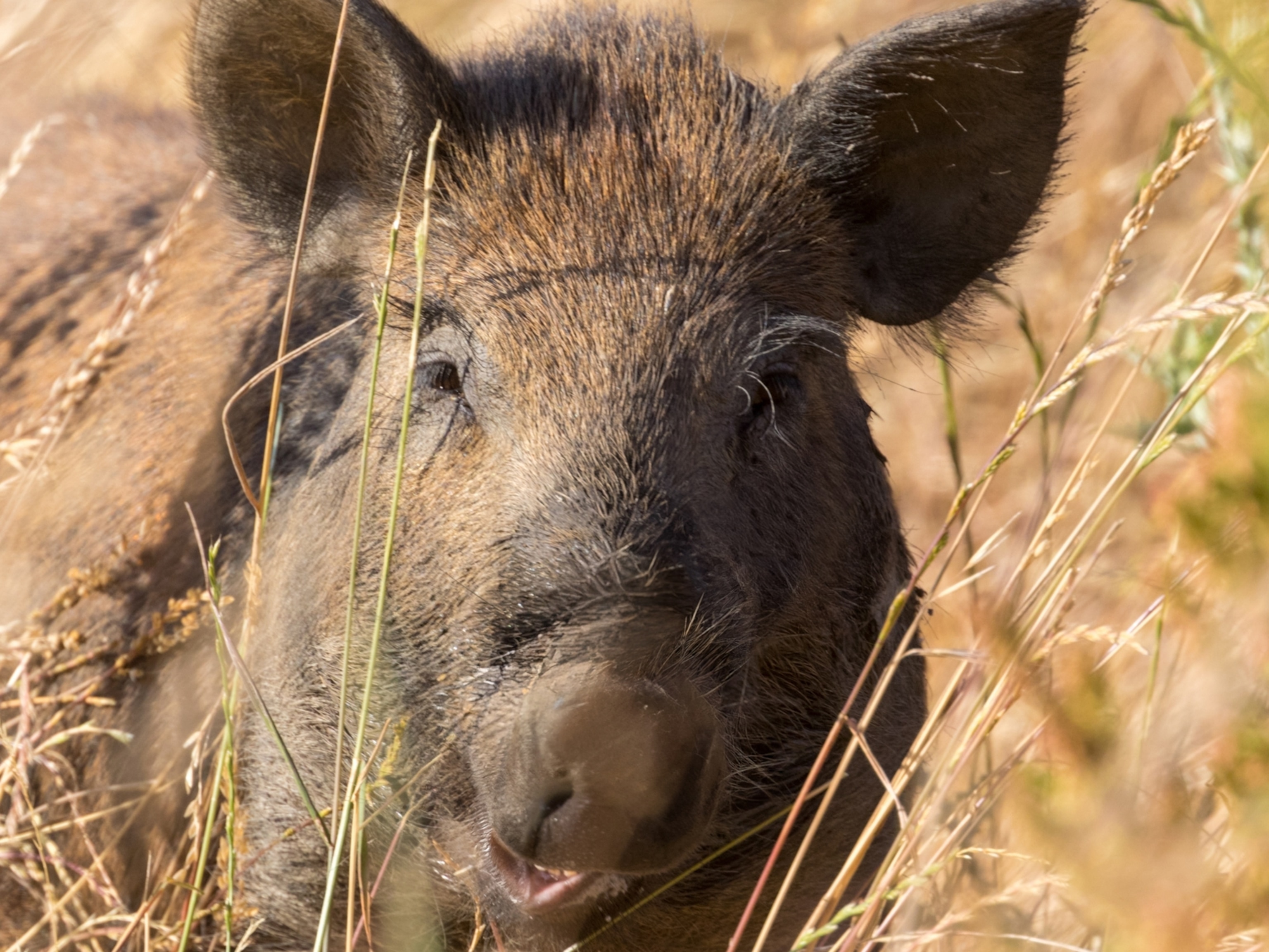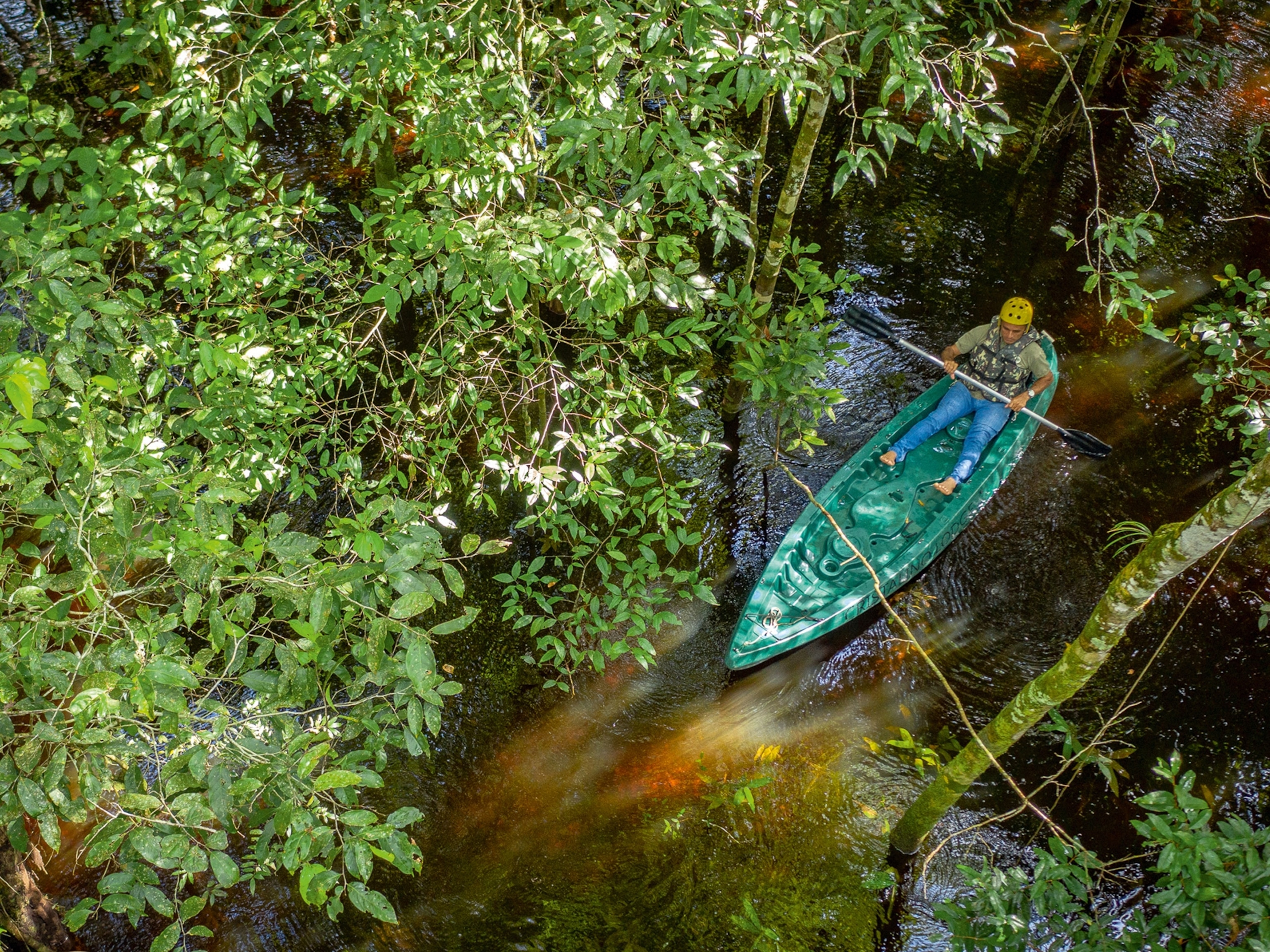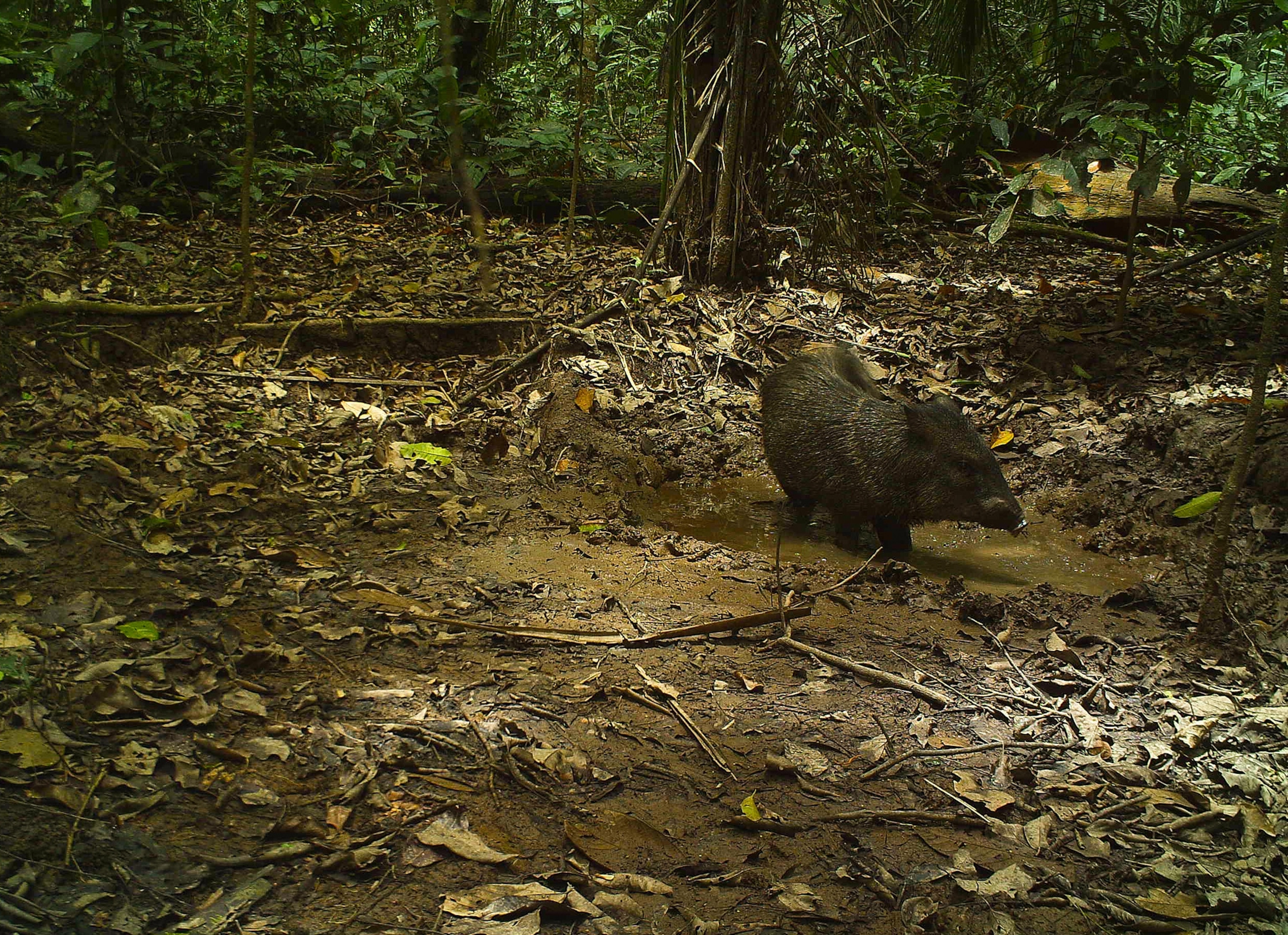
Where Peccaries Wallow, Other Animals Follow
Peccaries are like pigs: They wallow. In the Peruvian rain forest, those mud puddles are wildlife magnets.
COCHA CASHU BIOLOGICAL STATION, Peru—At this research outpost in Manú National Park, east of the Andes, there's an open space in the Amazon rain forest, a wet clearing where the surrounding vegetation is covered in splattered mud. In the central puddle, diving beetles ripple the surface as they rise to sip oxygen from the air. An aquatic cricket swims laps.
The mud around the puddle is spangled with the tracks of animals—and in particular with the impressions, like strokes from a wire brush, left not by the feet but by the stiff hair of the collared peccary.
This is a peccary wallow. Collared peccaries (Pecari tajacu) are piglike animals, and like domestic pigs, they love to wallow in mud.
Rolling and bathing likely removes parasites, says tropical ecologist Harald Beck of Towson University in Maryland, and it certainly coats the peccaries' backs with mud, which keeps them cool. It also may be just plain fun. "They behave like little kids," says Beck. "A lot of splashing around, social behavior and grooming."
But as Beck's research here at Cocha Cashu has shown, peccary wallows have a serious and surprisingly large ecological impact. During the dry season from May to October, the wallows become water holes for an enormous array of animals, from frogs to tapirs to ocelots.
Trapped on Camera
On a cool morning this week Beck is changing the memory card on a camouflaged, motion-triggered camera that he has set up at a wallow. Over the birdsong and the hum of insects, he explains that he can let his camera run for months at a time because peccary wallows are persistent. In fact, the animals return to the same spots to wallow year after year.
As they roll in the mud, they create a depression, lined with a water-resistant layer of peccary-molded clay, that fills with rainwater and stays filled even in the dry season. During the driest months, almost all the surface water available in the forest, apart from lakes and rivers, is in wallows.
Beck became interested in these wallows when he discovered next to one of them a foam nest of tadpoles—a structure some frogs build to house their young when they are small and vulnerable to predators. When the tadpoles are larger, they slither from the nest into the water. Observing the foam nest intrigued Beck; it meant the wallows were being used by frogs as a place to reproduce.
His systematic study of peccary wallows revealed that their water was chemically identical to that in natural puddles at Cocha Cashu. But because of their water-resistant bottoms, wallows held more water for longer than the puddles did. Beck and his students found more frog species there and at a much higher density.
Wallows turn out to be an especially good place for vulnerable tadpoles. The wallows are more reliably wet than puddles are, and don't have the large predators found in lakes and rivers. Previous observations in Brazil have shown that when rain forest areas became too small to support peccaries, some frogs quickly become locally extinct—presumably because there are no more wallows for them to reproduce in.
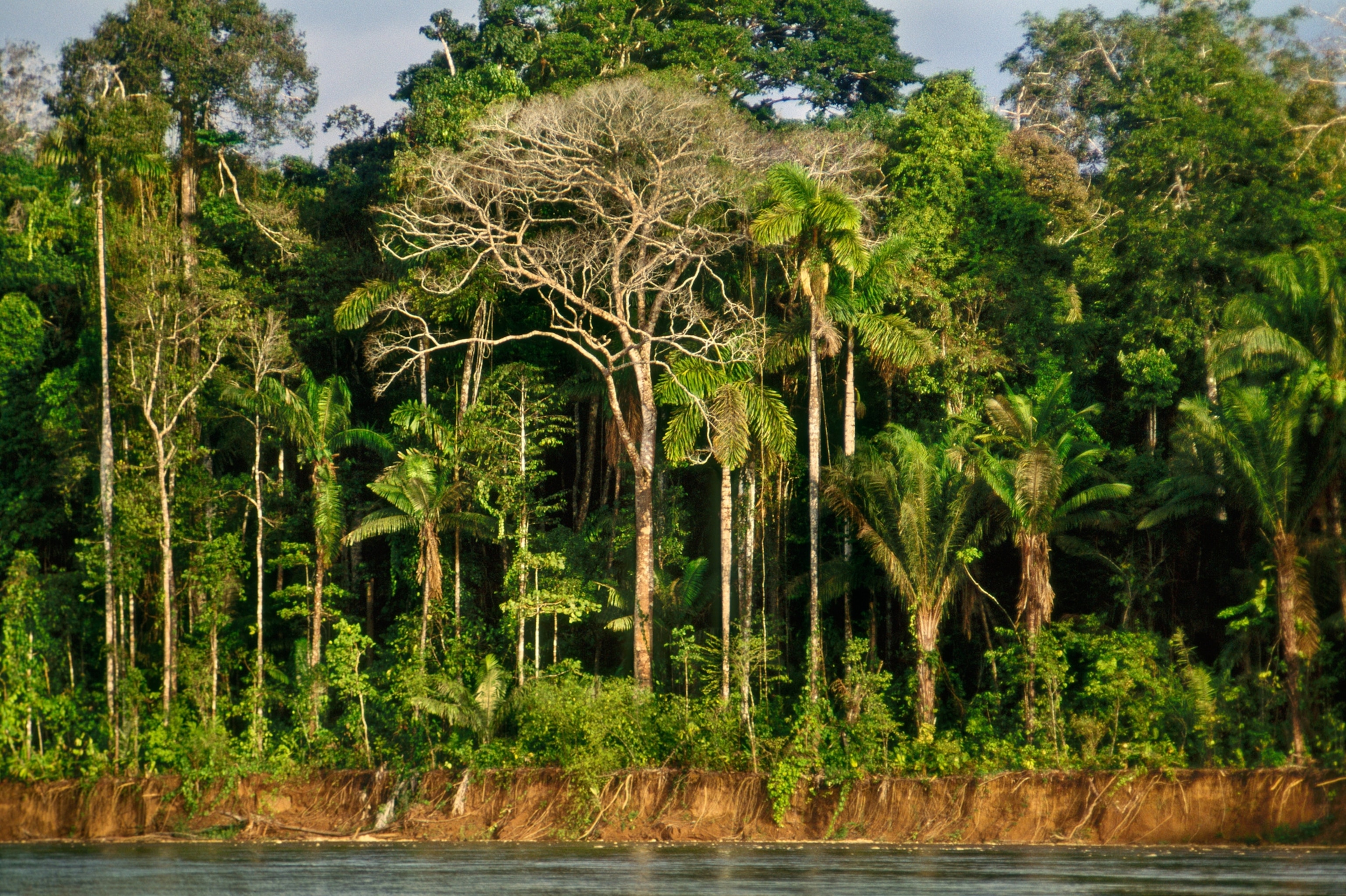
Everyone Likes a Wallow
Now Beck is expanding his study to other vertebrates that use wallows. Many come to drink at a reliable water source during the dry season. And he's catching many of them on camera.
Back at his office, a cubicle in the palm-thatched, mosquito-screened lab at Cocha Cashu, which is operated by the San Diego Zoo, Beck downloads the camera's pictures. One image has captured the powerful back of a puma, another the fleeting form of an ocelot. A third shows a bat swooping low to drink, its ten-inch-long wing outstretched.
Over the past few years, Beck has seen an amazing array of jungle animals visiting the wallows, including jaguars, tapirs, falcons, owls, monkeys, and nocturnal spotted pacas. "Everyone and their grandmother comes here," he says. In one of his favorite photos, a razor-billed curassow (a large black bird with a gaudy red beak) seems to wait its turn as a brown agouti (a large, graceful rodent) bathes in the wallow.
The collared peccaries themselves stop by a couple of times a week to bathe and frolic, keeping the wallows open. They come in small families, the adults weighing up to 77 pounds (35 kilograms).
They're not the only animals that act as ecosystem engineers. Beavers dam streams and make wetlands; bison create dust wallows that collect moisture in the prairies. Alligators create "gator holes" in the Everglades, wet depressions in which they wait out dry conditions—accompanied by many species of insect, fish, and bird.
"Peccary wallows are wet areas surrounded by dry areas; gator holes are wetter areas in a wet landscape," explains Frank Mazzotti, an ecologist at the Fort Lauderdale Research and Education Center of the University of Florida. "Both provide wetter habitats for species that would not otherwise be able to exist."
A Forest Without Peccaries
Historically, a larger species of peccary was common in Manú National Park as well as elsewhere in Central and South America. White-lipped peccaries (Tayassu pecari) weigh up to 121 pounds (50 kilograms) and roam in larger groups than collared peccaries—herds of up to a thousand individuals were sighted in the past. The wallows made by such herds must have been immense.
But white-lipped peccary populations are down 30 percent in the past 18 years, and they have gone locally extinct in many places due to disease, habitat loss, and overhunting. "All you need is a dog and a shotgun and you can take out a whole herd," Beck says.
Beck's work suggests that local extinctions of peccaries could lead to a wave of extinctions and population reductions in species that rely on the wallows. "There is a lot that cascades through the ecosystem, and we are just starting to understand this," Beck says.
Ecologists have long studied the effects that can ripple out from the loss of a key predator or prey species. But they're paying more attention lately to what happens when an ecosystem loses its engineer, and in the process they're discovering new ways in which the extinction of a species, locally or globally, can impoverish an entire community.
Follow Emma Marris on Twitter.

